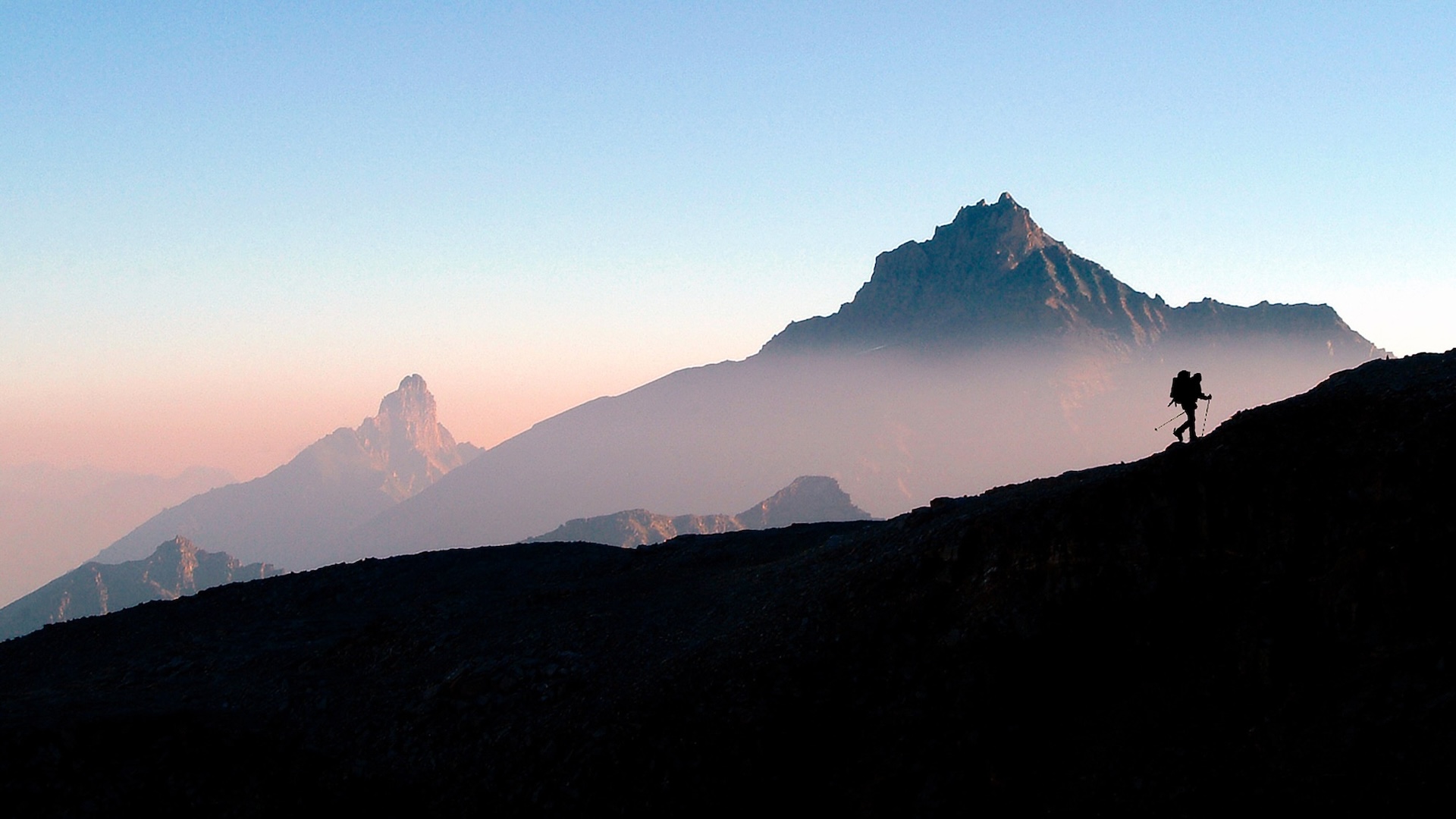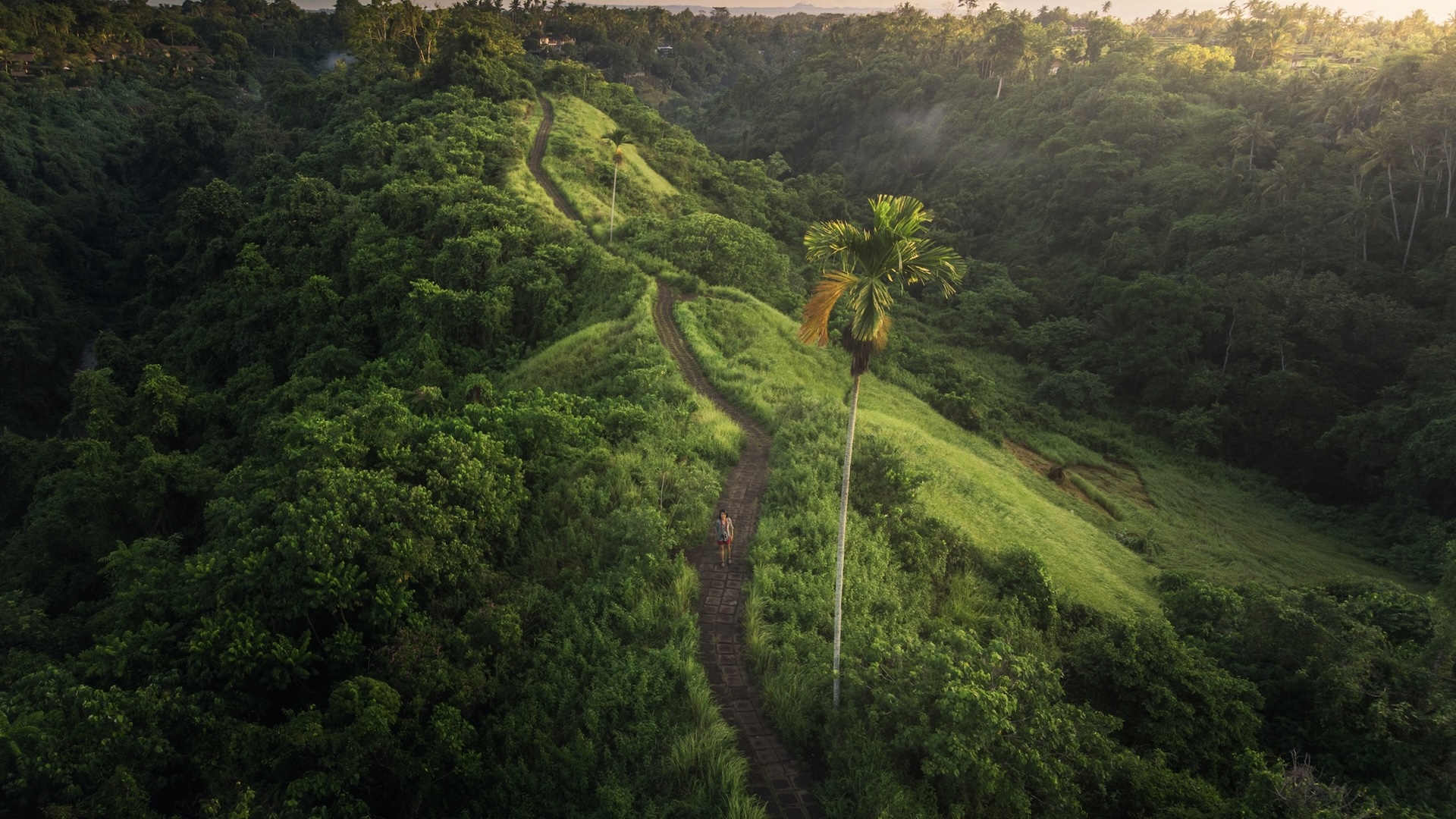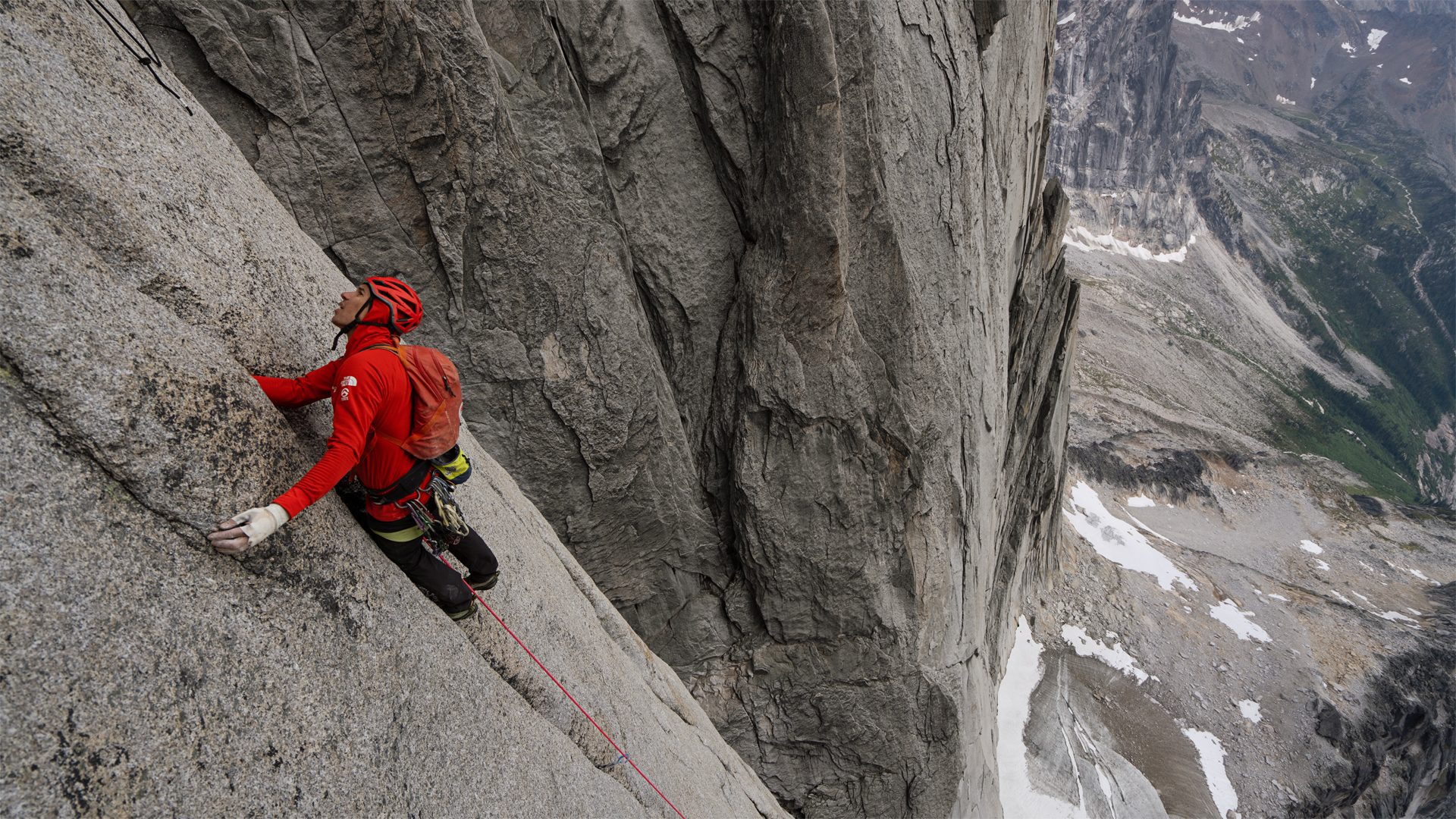16 of the best tips for ridge walking
How to make sure you are prepared for hiking a ridge (including turning back if you choose to)

When someone says “mountain ridge”, most of us think of a long, narrow apex or a high crest of land with steep drops on either side. For some hikers, this brings feelings of excitement, while for others it creates fear.
One good thing, though, is that most ridge walks do provide superb views.
In fact, mountain ridges take many different forms from very narrow, precipitous and lengthy, to rocky and exposed, to wide and curvaceous. There is normally a section that has steep drops, either one of both sides, and some ridges require a bit of scrambling, or even some climbing and rope work
Few walking routes will be entirely a ridge, although the ridge section may be a major focus.
If you know there will be a ridge as part of your walk, here are our top tips for tackling it with skill, calm and safety.
16 tips for ridge walking

1 Not all ridges are the same
Every ridge walk is naturally unique. Ridges comes in a wide variety of shapes, sizes and heights. They can also have very different levels of difficulty, from well-trodden and easy-going hiking trails that require only care and attention rather than ropes and belays, through scrambles and via ferratas, to very challenging exposed rocky routes where you will require a skilled climbing partner to navigate.
2 Do your research
There are many great ridge walks worldwide, such as the UK’s most feared ridge The Cuillin on the Isle of Skye; the Aonach Eagach in Glencoe, also Scotland; Pic de Gleize in France; the Hardergrat Trail in Switzerland; Romsdalseggem Ridge, Norway; Mgoun Ridge in Morocco; and others in America such as Angels Landing in Utah and the Mist Trail in Yosemite National Park in America.
Advnture Newsletter
All the latest inspiration, tips and guides to help you plan your next Advnture!
To be sure that you can safely and happily walk a ridge it’s a good idea to read and research the route first. Check out the details of ridge routes on-line and in books.
3 Know your limitations
If you are planning a ridge walk, you should not overestimate your abilities and capabilities. Every year, there are emergency operations to rescue hikers that have ended up in difficult situations on ridges. Sadly, some end up as fatalities.
The last thing you want is to be faced with a dangerous trail and no way of turning back. This is especially true if you have a fear of heights, known as acrophobia, which involves feelings of intense panic and discomfort around heights. Some people describe having vertigo symptoms, such as dizziness, when close to the edge of a ridge.
So, before you head out for a ridge walk, it’s a good idea to know how you might react.
The best way to understand how you cope with ridge walking is to try some easier graded ridges. This might mean a shorter ridge, or a walking a wider ridge that has some narrower sections.
To find the right ridge walk to test your nerves, you can search on-line, refer to walking books or ask more experienced hiking friends.
Some ridges are graded and it will depend where you are walking, for example the UK, Europe of US, as to the grading scale. The first ridge walk that you do should be easy graded or have no grading because it is not considered too technical.
Another suggestion is to head to an indoor climbing centre and discover how you deal with being at height on a wall. With indoor climbing walls you have the safety of ropes and belays so you can assess your emotions as you climb.
A professional walking guide can be booked for some ridge walks.
If extreme fear is your over-riding emotion it might be a good idea to steer clear of narrow ridge walks altogether. Saying this, many people find that with a bit of experience they can tolerate greater levels of exposure with gained confidence.

4 Build up your experience
As mentioned in tip 3, it is possible for many walkers to gain confidence for narrower ridges by building up their experience. At first, it can seem daunting to walk a section of mountain with steep drops on one or both sides. But the more you do this type of walking, the more you will realise that, with care, the ridges can be tackled safely.
5 Learn some technical skills
To tackle a ridge walk safely it’s vital to learn some important skills such as how to scramble and also how to climb with the use of ropes and belays.
Climbing centres, outdoor climbing instructors and other outdoor experts can all teach walkers some useful ridge walking skills. You should be able to gain confidence from learning how to scramble a rock face or section of a ridge.
Even if you are not planning to lead a climb of different sections of a ridge walk, you should know how to climb while attached to a lead climber. Abseiling is also a recommended skill and this technique can be learned from professionals.

6 Check the weather
Ridge walks are best undertaken in fine weather. After all, you will get some of the best mountain views from a ridge so it’s better if there is sunshine and blue sky, rather than cloud.
In addition, it’s safer to tackle a ridge walk in dry and warm conditions, compared to wet and windy. A ridge will be very exposed to the worst of the weather because there is little else around to shield you.
Make sure you check an accurate weather forecast before setting out to walk a ridge.
7 Assess the route and map
A map will show you the contour lines and heights along a ridge walk. You should check this out and read any ridge walk descriptions you can find.
Other hikers may have recorded their ridge walk on platforms such as YouTube so this could give you an on-the-ground experience before you set off.
8 Take your time
Not all ridge walks will require technical skills such as scrambling and rope work, but it is still important that you pay attention to where you place your feet. The nature of ridges is that they usually include narrow paths, often strewn with stones, as well as rocks so there is the potential for tripping over. If the ground is wet there is a greater likelihood of slipping.
You should take your time when walking ridges to be sure of making the best choice of route and foot placement. Never feel pushed along by a companion but, instead, stay in your own comfort zones for better safety.
9 Will you go round, or over?
Some ridges will have sections that have two options for a walking route – over and around. Even if you go on the ”around” route, often called a “chicken run”, you might still face steep drop-offs and a narrow path. The chicken run is also likely to be longer than going over the top although the latter will probably be trickier and more exposed.
Remember that you can start one option and then switch to the other if you want.
10 Look ahead
If you are afraid, the best place to look is just ahead at where you are placing your feet. Don’t look straight down at your feet, but rather a yard to two ahead so you can anticipate any natural obstacles.
It can be very scary to look down at the sides of the ridge, especially if there are steep drops, so it is better to hold a gaze ahead.
If you stop for a breather or to wait for someone, the best advice is to look ahead along the ridge or gaze to the horizon.
11 You can use your hands and feet
Sometimes, if there is a steep section, it’s wise to use your hands as well as your feet. Having good traction is vital and the advice is to always have two or three points of contact with the rock or ground.

12 Take hiking poles
Hiking or trekking poles provide extra balance and this can be useful whether hiking uphill, along a ridge or downhill.
13 Wear good quality footwear
Ridge walks require sturdy footwear, whether hiking boots or hiking shoes, and with excellent grip. This is not the place for road running footwear with little undersole grip.
For some ridge walks, footwear known as “approach shoes” make good sense. Approach shoes are a cross between hiking shoes and climbing shoes and offer great traction.
14 Pack spare kit
Because ridge walks can be exposed to the elements, you may need to put on extra layers, whether it's a long-sleeved baselayer, waterproof jacket, windproof jacket or insulated jacket.
As well as feeling the cold on a high ridge, you may also suffer in the heat so you should ensure you have lightweight clothing, sun cream and sunglasses.
15 Take plenty of water
Ridges are rarely a good source of natural water. There may be fresh water on the approach to a ridge and on the descent, but if the ridge is long and sustained you will need to carry enough of your own water for adequate hydration.
16 Don’t be afraid to say no
If you are nervous or unsure about a ridge walk, you should be confident enough to tell a friend that it’s not for you. It’s better to turn back than to keep going when you are terrified.

Fiona Russell is a widely published adventure journalist and blogger, better known as Fiona Outdoors. She is based in Scotland and is an all-round outdoors enthusiast with favorite activities including trail running, mountain walking, mountain biking, road cycling, triathlon and skiing (both downhill and backcountry). Aside from her own adventures, Fiona's biggest aim is to inspire others to enjoy getting outside and exploring, especially through her writing. She is also rarely seen without a running skort! Find out more at Fiona Outdoors.
